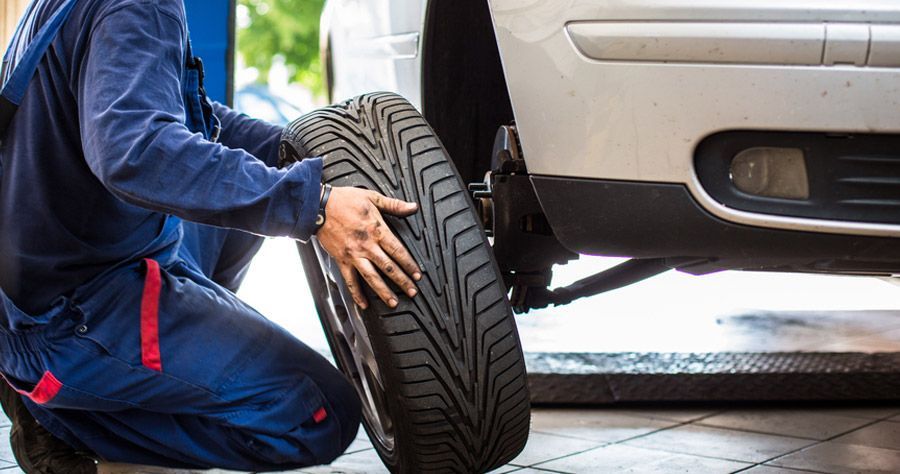Get in touch
555-555-5555
mymail@mailservice.com
HOW TO PROPERLY TAKE CARE OF YOUR TIRES
HOW TO PROPERLY TAKE CARE OF YOUR TIRES

When it comes to your tires, it’s important to consider several factors to ensure your vehicle is as safe as possible through the winter months.
In Ottsville, PA, long-lasting and healthy tires are the best way to take on the winter.
There are two primary ways of maximizing your tire’s life span: wheel balancing and tire rotation.
In this article, we’re taking you through everything you need to know about preserving your tires this winter. Cunningham’s Automotive Repair has the skilled mechanics you need to ensure safe travel!
Tire Rotation
Tire rotation is the periodic changing of the position of each of the tires on your vehicle.
You should change your tires based on your vehicle manufacture recommendations, or every 5,000 miles. As a good rule of thumb, you should have your tires rotated every time you go in for an oil change.
Through the routine rotation of your tires, wear is spread evenly across all four tires. Each specific tire position on your vehicle requires different performance from each tire, leading to more or less wear and tear.
Rotating your tires ensures that their tread life is maximized. Without proper rotation, tires can wear out sooner than expected, leading to you having to buy new ones.
New tires are much more expensive than a tire rotation. Not only will you save money—your car will grip the road better no matter the weather conditions!
Reading Your Tire’s Sidewall
Each tire you own has a sidewall that gives important information about the make of your tires. Reading this sidewall can feel like a foreign language, but once you understand it, it’s actually quite easy.
Your sidewall will read something like this: P225/50/R17 98H
The first letter identifies what type of tire it is. “P” stands for Passenger Tire, and “LT” stands for Light Truck Tire.
The number immediately following the first letter is the tires section, measured from sidewall to sidewall in millimeters.
The second number, “50” in our example above, is the two-figure aspect ratio. This compares tire height to tire width.
The next letter, “R” shown above, indicates the construction type. “R” stands for radial construction, “B” stands for belted bias, and “D” stands for diagonal bias.
The last number, “17”, is the diameter from wheel to rim measured in inches.
“98H” is your tire’s load index and speed rating. This tells you how much the tire can support when properly inflated.
It’s important to understand how to read your tire wall so that you have the necessary knowledge when consulting about potential replacements or repairs.
Performance Vs Consumer-Grade Tires
Performance-grade tires tend to be for more sporty vehicles that require advanced performance and need to be replaced about every 20,000 miles.
Consumer-grade tires, on the other hand, are designed for the more casual driver. They have a much longer lifespan and are designed to go to work for the long-haul.
Conclusions
Understanding and taking care of your tires can help to keep your vehicle safe and reliable during the sometimes harsh Pennsylvania winter.
Cunningham’s Automotive Repair in Ottsville provides comprehensive tire services from highly skilled mechanics to keep you prepared for all that winter has to offer.
Could your tires use some attention? Schedule an appointment with us today!
Family Owned and Operated Since 2006
Cunningham's Automotive Repair is honored to serve the community of Ottsville, PA with car repair and automotive repair services. We work hard to be the best auto shop in Ottsville, PA and our automotive professionals always strive to provide our customers honest, efficient, and friendly service. We also carry top brands that will suit your needs. Please contact us if you need automotive or car repair services.
All Rights Reserved • Privacy Policy & Terms of Use • Powered By

